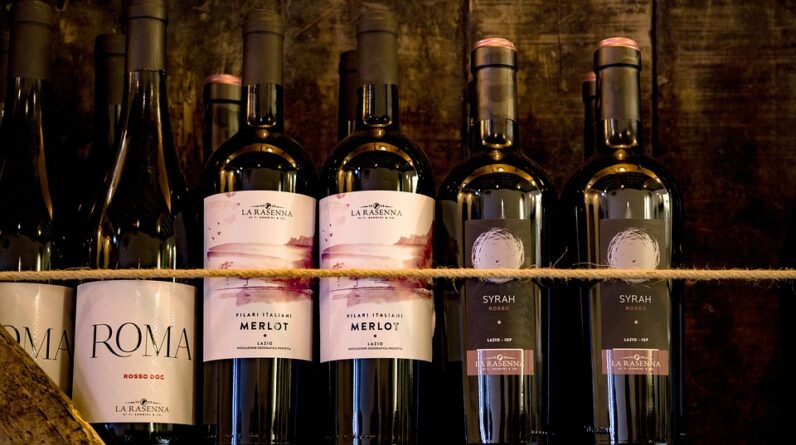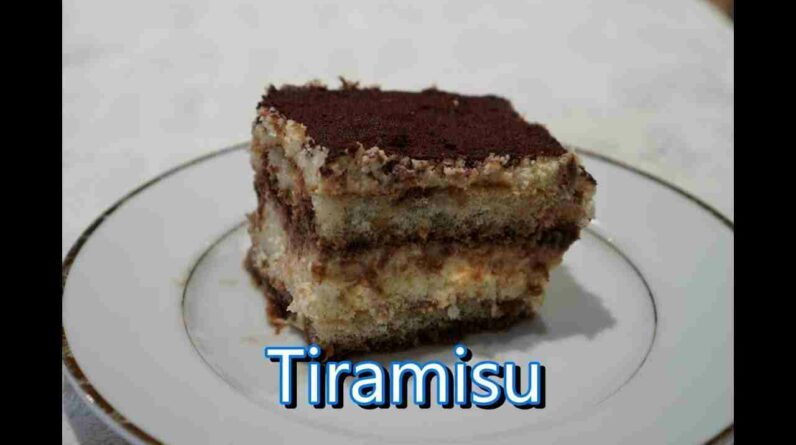Get ready to take a delicious journey to Italy as we uncover the secrets of how Italians celebrate Easter with mouthwatering dishes like succulent lamb and tantalizing Easter bread. Easter is a time of joy and celebration in Italy, and it’s no surprise that food plays a central role in these festivities. From traditional recipes passed down through generations to modern culinary twists, Italians take pride in creating unforgettable gastronomic experiences during this special time of year. So join us as we explore the delectable flavors and rich traditions that make Italian Easter celebrations truly unforgettable.
Easter Traditions in Italy
Religious Significance
Easter holds great religious significance in Italy, as it commemorates the resurrection of Jesus Christ. The entire week leading up to Easter Sunday, known as Holy Week or Settimana Santa, is marked by various religious processions and ceremonies. The most important of these is the Via Crucis (Way of the Cross), where participants reenact the final moments of Jesus’ life and carry a cross through the streets. Attending Mass on Easter Sunday is a common practice for many Italians, who gather in churches to celebrate the resurrection of Christ.
Family Gatherings
Easter is a time when families come together in Italy. Relatives from near and far often gather to celebrate this special occasion. It is a time to strengthen bonds, share laughter, and create lasting memories with loved ones. The festivities usually start with a hearty Easter brunch or lunch, where the whole family gathers around a beautifully decorated table laden with delicious food. This time of togetherness and celebration is cherished by Italians, as it brings families closer and reinforces the importance of family values.
Decorations and Festivities
Italian towns and cities come alive during Easter with vibrant decorations and festivities. Streets and churches are adorned with flowers, colored ribbons, and intricately designed religious symbols. In many places, traditional processions and parades take place, featuring people dressed in biblical costumes and carrying religious statues. One of the most famous events is the Scoppio del Carro (Explosion of the Cart) in Florence, where a cart filled with fireworks is ignited to ensure a good harvest for the year. These elaborate decorations and festivities create a festive atmosphere, adding to the joyous spirit of Easter in Italy.
Importance of Lamb in Italian Easter
Symbolism of Lamb
Lamb holds immense symbolism during Easter in Italy. It is seen as a representation of Jesus, known as the “Lamb of God” in Christian traditions. The sacrificial nature of the lamb reflects the sacrifice of Jesus for the salvation of humanity. The presence of lamb dishes on the Easter table serves as a reminder of this religious significance and offers a way for Italians to honor this symbolism.
Traditional Lamb Dishes
Italian cuisine boasts a rich variety of lamb dishes that are traditionally prepared and enjoyed during Easter. One popular dish is “Agnello al Forno” (Roasted Lamb), where the lamb is seasoned with herbs, garlic, and olive oil, then slow-roasted to perfection. Another classic is the hearty “Spezzatino di Agnello” (Lamb Stew), where tender lamb pieces are simmered with vegetables and aromatic herbs for hours, resulting in a rich and flavorful dish. Grilled lamb chops, seasoned simply with salt, pepper, and a drizzle of olive oil, are also a favorite choice for Easter celebrations.
Regional Variations
Just like Italian cuisine itself, the preparation of lamb dishes for Easter varies across the different regions of Italy. In central Italy, particularly in Rome, the popular dish “Abbacchio alla Romana” (Roman-style Lamb) is a staple. The lamb is marinated with garlic, rosemary, and white wine, then roasted until golden and tender. In southern Italy, a traditional Easter dish called “Agnello Cac’e ove” features lamb cooked with cheese and eggs, resulting in a rich and creamy sauce. These regional variations add diversity to Italian Easter cuisine and reflect the culinary traditions specific to each area.
Easter Bread in Italian Cuisine
Significance of Easter Bread
Easter bread holds a special place in Italian cuisine during the Easter season. It symbolizes the resurrection of Christ and the abundance of life that comes with it. The traditional shape of Easter bread, often in the form of a crown or a braid, represents the crown of thorns worn by Jesus during the crucifixion. Sharing Easter bread with loved ones also symbolizes unity and togetherness, as families gather around the table to break bread and celebrate Easter.
Varieties of Easter Bread
Italy is known for its diverse varieties of Easter bread, each with its unique flavors and regional specialties. One popular type is “Pane di Pasqua,” or Easter bread, which is typically sweet and enriched with ingredients like eggs, candied fruit, and aromatic spices. Another well-known variety is “Torta Pasqualina,” a savory Easter pie filled with spinach, eggs, and cheese, traditionally enjoyed in Liguria. “Colomba di Pasqua,” shaped like a dove, is another famous Easter bread that originated in Milan and is now popular throughout Italy. It is traditionally made with a soft, citrus-infused dough, topped with sugar glaze and almonds.
Traditional Preparation
The preparation of Easter bread involves time-honored methods and careful attention to detail. The dough is often made with flour, yeast, sugar, eggs, and butter or olive oil. It is then meticulously kneaded until smooth and elastic before being left to rise. Once the dough has doubled in size, it is shaped into the desired form, whether it’s a braid, a crown, or a dove. The bread is then baked until golden and fragrant, creating a delightful aroma that fills the kitchen and entices the senses. The traditional preparation of Easter bread reflects the reverence and dedication Italians have for preserving culinary customs.
Lamb Recipes for Easter in Italy
Classic Roasted Lamb
To prepare a classic roasted lamb, start by preheating the oven to the desired temperature, usually around 350°F (175°C). Season the lamb generously with salt, pepper, minced garlic, and a drizzle of olive oil. Place the seasoned lamb on a rack in a roasting pan and roast it for about 20 minutes per pound, or until the internal temperature reaches your desired doneness. Remember to let the lamb rest for a few minutes before carving and serving. This classic dish is sure to be a showstopper at your Easter table, with its succulent meat and aromatic flavors.
Lamb Stew
For a comforting and flavorful lamb stew, begin by browning lamb pieces in a large pot with a little olive oil. Once browned, remove the lamb and set it aside. In the same pot, sauté onions, carrots, and celery until they are softened. Return the lamb to the pot and add broth, red wine, tomatoes, and herbs such as rosemary and thyme. Cover and simmer for several hours until the lamb is tender and the flavors have melded together. Serve the stew hot with crusty bread or over creamy polenta for a satisfying Easter meal.
Grilled Lamb Chops
Grilled lamb chops are a simple yet impressive dish that can be prepared quickly for your Easter feast. Start by seasoning the lamb chops with salt, pepper, and a light drizzle of olive oil. Preheat your grill to high heat and grill the lamb chops for about 3-4 minutes per side, or until they reach an internal temperature of 145°F (63°C) for medium-rare. Let the lamb chops rest for a few minutes before serving to ensure tender and juicy meat. The smoky flavor from the grill combined with the succulent lamb creates a mouthwatering dish that will surely please your guests.
Traditional Italian Easter Bread Recipes
Pane di Pasqua
To make traditional “Pane di Pasqua,” start by combining flour, sugar, yeast, and salt in a large mixing bowl. In a separate bowl, beat eggs, milk, and melted butter together, then add the wet ingredients to the dry ingredients. Knead the dough until it becomes smooth and elastic. Add in candied fruit and optional spices like cinnamon or nutmeg for extra flavor. Let the dough rise in a warm place until doubled in size. Shape the dough into a braid, crown, or any preferred shape, and let it rise again. Finally, bake the bread in a preheated oven until golden brown and fragrant. Serve it sliced, and enjoy the delightful flavors of Easter.
Torta Pasqualina
To prepare the savory Easter pie known as “Torta Pasqualina,” start by making the dough with flour, water, olive oil, and salt. Let the dough rest while you prepare the filling. The filling typically consists of wilted spinach, cooked and seasoned with garlic, onions, and herbs like parsley or dill. Layer the spinach filling and hard-boiled eggs in the dough-lined pan, and repeat the layers until the pan is filled. Cover the filling with another layer of dough, seal the edges, and bake until the pie is golden brown. This delicious and satisfying Easter dish is perfect for those who prefer savory flavors.
Colomba di Pasqua
Colomba di Pasqua is a symbolic Easter bread shaped like a dove. To make this delightful dessert, start by preparing a soft and citrus-infused dough with ingredients such as flour, eggs, butter, sugar, and orange or lemon zest. After the dough has risen, shape it into the form of a dove and let it rise again. Brush the surface of the dough with beaten egg and sprinkle it with pearl sugar and almonds before baking it until golden and fragrant. Colomba di Pasqua is typically enjoyed with a cup of coffee or tea, and it brings a sense of joy and celebration to the Easter table.
Other Traditional Easter Dishes in Italy
Eggs, Symbol of New Life
Eggs hold a significant role in Italian Easter traditions as a symbol of new life and rebirth. Hard-boiled eggs are often dyed and decorated with colorful patterns or wrapped in onion skins to create natural hues. These beautifully decorated eggs are used as decorative elements on Easter trees or as gifts exchanged between friends and family members. Additionally, eggs are a key ingredient in many Easter dishes, including Easter bread, torta pasqualina, and various desserts.
Carciofi alla Romana (Roman-Style Artichokes)
In Rome, Carciofi alla Romana, or Roman-style artichokes, are a beloved Easter dish. The artichokes are trimmed and stuffed with a mixture of garlic, parsley, and mint, then braised in a fragrant broth until tender. The result is a flavorful and tender artichoke that perfectly complements the Easter feast. Carciofi alla Romana showcases the seasonal produce of spring and adds a touch of freshness to the Easter table.
Torta Rustica (Savory Easter Tart)
Torta rustica, a savory Easter tart, is a delicious and versatile dish that can be enjoyed as an appetizer, a main course, or even a picnic treat. The tart is typically filled with a combination of cured Italian meats such as salami, ham, and mortadella, along with a variety of cheeses and sautéed vegetables. The filling is then encased in a flaky pastry crust and baked until golden. Torta rustica is a crowd-pleasing dish that combines the flavors of different ingredients, making it a popular choice for Easter celebrations.
Easter Monday Celebration: ‘Pasquetta’
Day Trip and Picnic Traditions
Easter Monday, also known as “Pasquetta,” is a public holiday in Italy that is eagerly awaited by many. It is a day when Italians traditionally organize day trips to the countryside or coastal areas to enjoy the spring weather and the beauty of nature. Families and friends gather for picnics, bringing along baskets filled with delicious food, including leftovers from the Easter feast. Pasquetta provides an opportunity to relax, bond with loved ones, and savor the outdoors after the religious and culinary indulgences of Easter.
Outdoor Activities
In addition to picnics, Pasquetta is also a day for outdoor activities and leisurely pursuits. Many Italians take advantage of the holiday to engage in sports, such as hiking, cycling, or playing games like soccer or bocce. Parks, beaches, and public spaces are filled with laughter and cheerful gatherings as people enjoy the holiday to its fullest. Pasquetta offers a chance to rejuvenate and recharge, connecting with nature and embracing the joys of the Easter season.
Leftovers from Easter Feast
Pasquetta is an ideal time to make use of the leftovers from the Easter feast. People often bring along trays of leftover roasted lamb, savory pies, Easter bread, and other delectable dishes from the previous day’s celebrations. These leftovers are enjoyed during the day trip or picnic, providing a convenient and delicious way to extend the Easter festivities. Pasquetta allows Italians to savor the flavors of Easter for an additional day, making the most of the culinary bounty and creating lasting memories with family and friends.
Wine Pairings for Italian Easter Dishes
Chianti Classico with Roasted Lamb
Roasted lamb pairs beautifully with Chianti Classico, a renowned Italian red wine from the Tuscany region. The rich fruit flavors and earthy undertones of Chianti Classico complement the savory and juicy qualities of the lamb. The wine’s balanced acidity cuts through the richness of the meat, enhancing the overall dining experience. Whether enjoying a classic Easter roasted lamb or a more modern preparation, Chianti Classico is a versatile and delightful choice to accompany this traditional dish.
Barolo with Lamb Stew
Barolo, often referred to as the “King of Wines,” is an excellent pairing for lamb stew. This full-bodied red wine from the Piedmont region in Italy boasts complex flavors of red fruit, leather, and spices, which resonate with the hearty and robust flavors of the lamb stew. The wine’s bold tannins and high acidity complement the rich and savory elements of the stew, creating a harmonious balance of flavors. Barolo elevates the enjoyment of lamb stew to a whole new level, making it a fitting choice for a special Easter meal.
Pinot Noir with Grilled Lamb Chops
Grilled lamb chops, with their tender and succulent meat, pair wonderfully with a medium-bodied Pinot Noir. This elegant red wine from Italy or other regions, such as Oregon or Burgundy, offers vibrant fruit flavors, subtle earthy notes, and a delicate structure. The wine’s acidity and refined tannins harmonize with the smoky grilled flavors of the lamb, elevating each bite. Pinot Noir’s versatility and graceful character make it an excellent choice for those who prefer a lighter-bodied wine with their Easter lamb chops.
Easter Desserts in Italy
Pastiera Napoletana
Pastiera Napoletana, a traditional Neapolitan Easter dessert, is a rich and fragrant pie filled with grainy ricotta cheese, candied citrus, aromatic spices, and a hint of orange blossom water. The pie is encased in a buttery pastry crust and baked until golden. Pastiera Napoletana is a celebration of flavors and textures, with the creamy ricotta, the crunchy grain, and the vibrant citrus creating a harmonious blend. This indulgent dessert holds a special place in Italian Easter celebrations, offering a sweet conclusion to the feast.
Tiramisu
Tiramisu, meaning “pick me up” in Italian, is a classic Italian dessert enjoyed throughout the year, including during Easter. Layers of delicate ladyfingers soaked in coffee and liqueur alternate with a luscious mascarpone cream. The dessert is then dusted with cocoa powder, adding a bittersweet touch to the rich and creamy layers. Tiramisu offers a delightful interplay of flavors and textures, making it a crowd-pleasing choice for Easter celebrations. Its velvety smoothness and indulgent taste create a sweet ending to the festive meal.
Ricotta Cheesecake
Ricotta cheesecake is a lighter and more delicate alternative to the classic New York-style cheesecake. Made with ricotta cheese, eggs, sugar, and flavored with lemon zest or vanilla, this Italian-style cheesecake has a velvety texture and a subtle sweetness. It is often served with a dusting of powdered sugar or a drizzle of fruit preserves. Ricotta cheesecake is the perfect Easter dessert choice for those seeking a creamy and delightful treat without the heaviness of a traditional cheesecake.
Continuing Easter Traditions in Italian-American Communities
Preserving Italian Easter Customs
Italian-American communities in the United States have admirably preserved the Easter traditions brought by their ancestors from Italy. Families continue to gather and celebrate Easter with special dishes, decorations, and religious observances. The passing down of recipes, the preparation of traditional Easter bread, and the organization of religious processions allow these communities to maintain a strong cultural connection to their Italian heritage. Preserving and cherishing these customs ensures that future generations will also experience the joy and warmth of Italian Easter traditions.
Special Easter Menus at Restaurants
Italian-American restaurants often curate special Easter menus to cater to the demand for traditional Italian dishes during the holiday season. These menus often feature classic Easter recipes, such as roasted lamb, savory pies, and Easter bread. Restaurants strive to recreate the flavors and ambiance of an authentic Italian Easter feast, allowing customers to indulge in a taste of Italy without having to prepare the dishes themselves. Enjoying Easter meals at Italian-American restaurants has become a cherished tradition for many families, offering a convenient and delicious way to celebrate the holiday.
Community Festivals and Parades
Italian-American communities across the United States embrace their cultural heritage by organizing lively festivals and parades during the Easter season. These events showcase Italian traditions, music, and cuisine, drawing in locals and visitors alike. Festivals often include food stalls serving Italian delicacies, live performances of traditional music and dance, and processions featuring religious statues. Parades allow the community to come together, celebrate their shared heritage, and create lasting memories. These lively events bring the spirit of Italian Easter traditions to life, fostering a sense of community and cultural pride.
In conclusion, Easter in Italy is a time of great significance and celebration. From the religious rituals and family gatherings to the delicious food and festive decorations, Italians honor the occasion in a grand and meaningful way. The symbolism of lamb and the indulgence of Easter bread create a culinary experience that reflects the rich cultural heritage of Italy. With traditional recipes, wine pairings, and delightful desserts, Italians ensure that Easter is a time of joy, togetherness, and the continuation of cherished traditions. Whether in Italy or in Italian-American communities, Easter remains a beloved holiday that unites families and communities in the spirit of love, faith, and delicious food.










